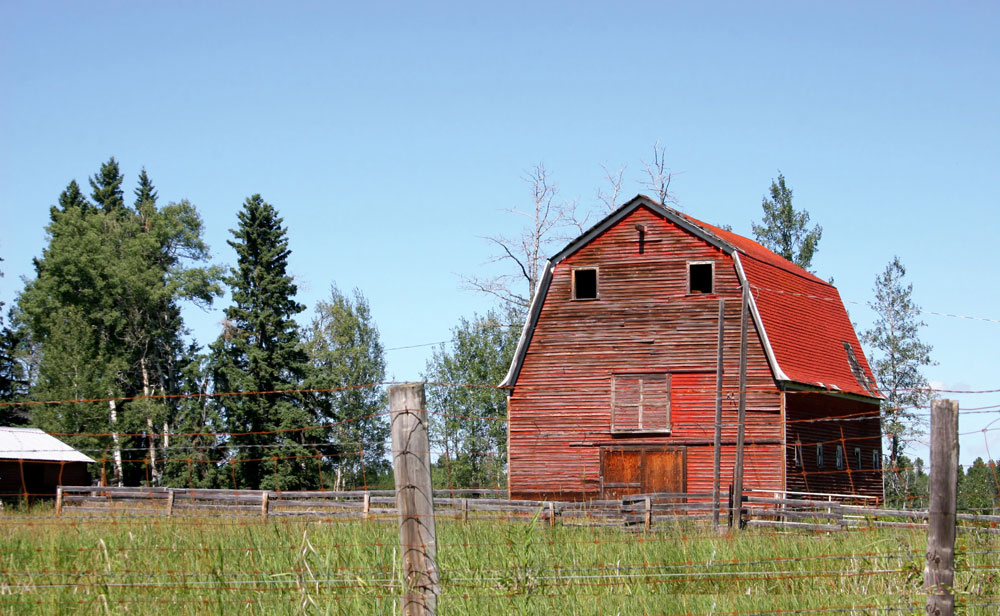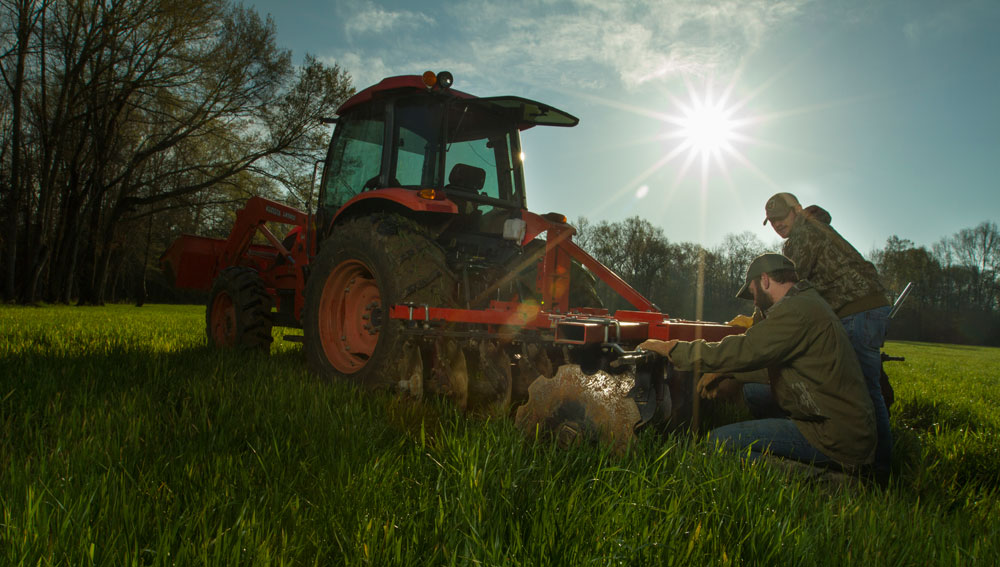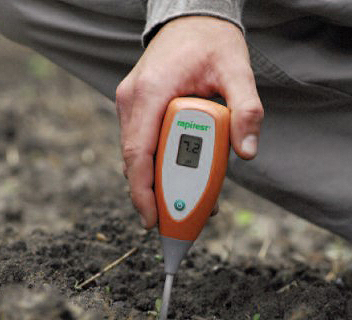Reese Johnson | Originally published in GameKeepers: Farming for Wildlife Magazine. To subscribe, click here.

It’s the gamekeeper’s ultimate dream, to buy a raw piece of land and turn it into a masterfully-crafted, wildlife-generating haven. Occasionally it’s 20 acres, sometimes it’s 2,000, but we all have different conditions and situations. No matter the size of the tract you may be fortunate enough to manage there will always be things you can do to improve the value of the land, the habitat for wildlife of all kinds, and to make it more comfortable, aesthetically pleasing and easily accessible for those who are fortunate enough to visit.
When the dream of finally being able to put your own sweat and blood into “dirt of our own,” overwhelming and anxious sensations often set in. You’ve dreamed of this opportunity your whole life, but where do you begin when there’s so much you hope to accomplish and prove with this tract? Whether you’ve done it before or hope to in the future, this “new property checklist” will help you to realize your dreams.
Goals
Just like any business or production farm, a plan of action should be a first priority with this new adventure. Determining 3-year, 10-year, and 20-year goals are important steps in deciding where to invest any further time and money. Is this the farm you will own forever or will you try to flip it in time? Should the focus be on one quarry, or multiple species, then what about food or cover for each? Can I support an upland game bird population? How much more money can I invest into this property for its betterment and be able to sell? There are a million questions it seems and it all just takes finding time. Looking at the aerial images, soils and having conversations with other individuals who are managing their dream farm can be very helpful when it comes to devising a course of action. Every tract is unique and will have its own specifics.

Neighbors
If the property you have purchased wasn’t surveyed before you bought it, this could be an investment of choice, one that will always hold its actual value and twice its value for the simple piece of mind when it comes to corners, lines and boundaries. Unfortunately so, it’s very important to realize that your neighbors will have at least some, if not significant influence on your hunting and abilities as a gamekeeper. If their land use and goals are quite different than yours, it could be detrimental to what you are hoping to accomplish, or at the very best, make your job more difficult. It’s wise to visit neighbors before you ever consider purchasing the parcel. In all cases, meeting your neighbors and understanding how they intend to use their land is important. In return, they should also be aware of your goals and what you intend to accomplish. Good neighbors can be one of the best assets to a property and teaching those who are unfamiliar with the “thinking of a gamekeeper” our principles and philosophies can be very beneficial for both parties.
Minerals/ Supplemental Feeding

get done. One of them is to do soil tests. Basically,
you should test anywhere you want the ground to
produce something for you; whether it’s a food plot,
agriculture or timber.
Regulations differ and beliefs vary, but it’s a fact, providing wildlife with any kind of carbohydrates or protein throughout the year is beneficial. This is one of the easiest ways to contribute on day-1 of your ownership. Anything you have to offer will help hold wildlife on your property and keep them looking for those new, easy food sources. Creating a mineral lick (not just salt) helps the animals during the summer months when those minerals are vital to their health and can also provide you a perfect place to capture some great trail cam pictures. Whether it’s protein pellets or corn, any form of food can help get the ball rolling before you can get your food plots, orchard, native sources or any other supply of food established. Free-choice feeders tend to benefit the animals more than a timed style feeders. Continuing this regiment will always help with growth and nutrition. You may not need to feed after your other sources are up and producing, but supplemental feeding is a tool gamekeepers should use for their wildlife’s benefit.
Soil Samples/Food Plot Design
Whether your intentions are to rent out your tillable acreage to a production farmer, farm it yourself, plant an orchard, grow timber or simply farm for wildlife, one of the first things you should do is to collect soil samples and have them analyzed. Knowing what amendments your various soil types may need to produce the crops intended or purposes you’ve chosen for it is key for making your efforts worthwhile and for your wallet. One of the best pieces of advice I’ve heard for laying out hunting food plots was to pick your tree first and build the plot around it. This may not work in many situations, but the main point is to design the plot before you break ground. Wildlife, including, and maybe even especially deer, travel efficiently. By this I mean; taking the path of least resistance is often the one chosen. “Taking in more than you’re burning” is simple survival and with your design you can very easily manipulate wildlife movement, and in turn increase your hunting success. What if your ground isn’t suitable to grow much and bedding/shelter may be your key to success? Your options may be to consider the different stages of forest growth and utilize logging or hinge cutting to vary your habitat types to suit more wildlife. I hate to be so basic, but it really is as easy as food, water, cover and security.
Trail Cameras

Another initial mission is getting those trail cameras working for you. For me, “checking SD cards” is like “opening presents on Christmas morning” every time, and taking inventory on your new farm can be exciting as well as productive. You need information about the wildlife on the property. If you wish to attain your goals, you need to know the state of your herd now if you’re ever going to get it to where you want it to be. Whether the age structure is already great or needs a little work, your influence as a gamekeeper will show in time. Whether you do a “by-the-book” trail camera herd assessment or just put a few cameras up to see what frequents the property, you should have some idea of what critters call your property home as soon as possible. While it isn’t vital to the farm’s future, it’s important to be able to build a history and see the fruit of your labor as the farm evolves. If your purchase falls during the off season, taking hikes throughout the property while the leaves are dormant will you give you a much better understanding of the lay of the land, the already established trails and the flow of your wildlife.
If you aren’t sure how to accomplish your goals for your new property, there is help out there. Various government agencies like the NRCS, USDA, Department of the Interior and various state agencies, along with your local Conservation Officer or Mossy Oak Properties office are usually happy to help.
Help
One of the best people to contact, whether you’re still looking or just purchased that “dream farm,” is your local Mossy Oak Properties Certified Land Specialist. Talking to somebody who shares the same passion you do, but deals with the tribulations you’re now experiencing on a daily basis can be “peace of mind” and a great resource. If nothing more than someone who can refer you to the right people for any forestry, surveying or other land improvement needs you need help with. There are also many other varying state agencies that can help with everything from soil samples to forestry evaluations and appraisals. Private land management programs are becoming commonplace today giving landowners more options than they would’ve had just a decade ago. Many of these programs including; WRP, WHIP, EQUIP, and several involving native warm season grasses can give you abilities to do more with your farm. Creating sanctuaries on the property, whether they are for whitetails or waterfowl, is another central preliminary consideration. Designing a sanctuary is likely something we only get to attempt a few times in our life. Even if the day you sign that contract is 20 years in the future, keeping a list of ideas and resources can help prepare you for when that day comes. It can help remind you of the so many possibilities and strategies developed. Land is a finite resource and there’s nothing more satisfying than being able to utilize it for a diverse purpose and see wildlife thrive and how your influence has helped.

This piece was written by MOP Land Specialist Reese Johnson who serves the Western Kentucky area. For more information on this topic or finding your dream farm in Western Kentucky, Reese may be contacted at reesej@mossyoakproperties.com.































